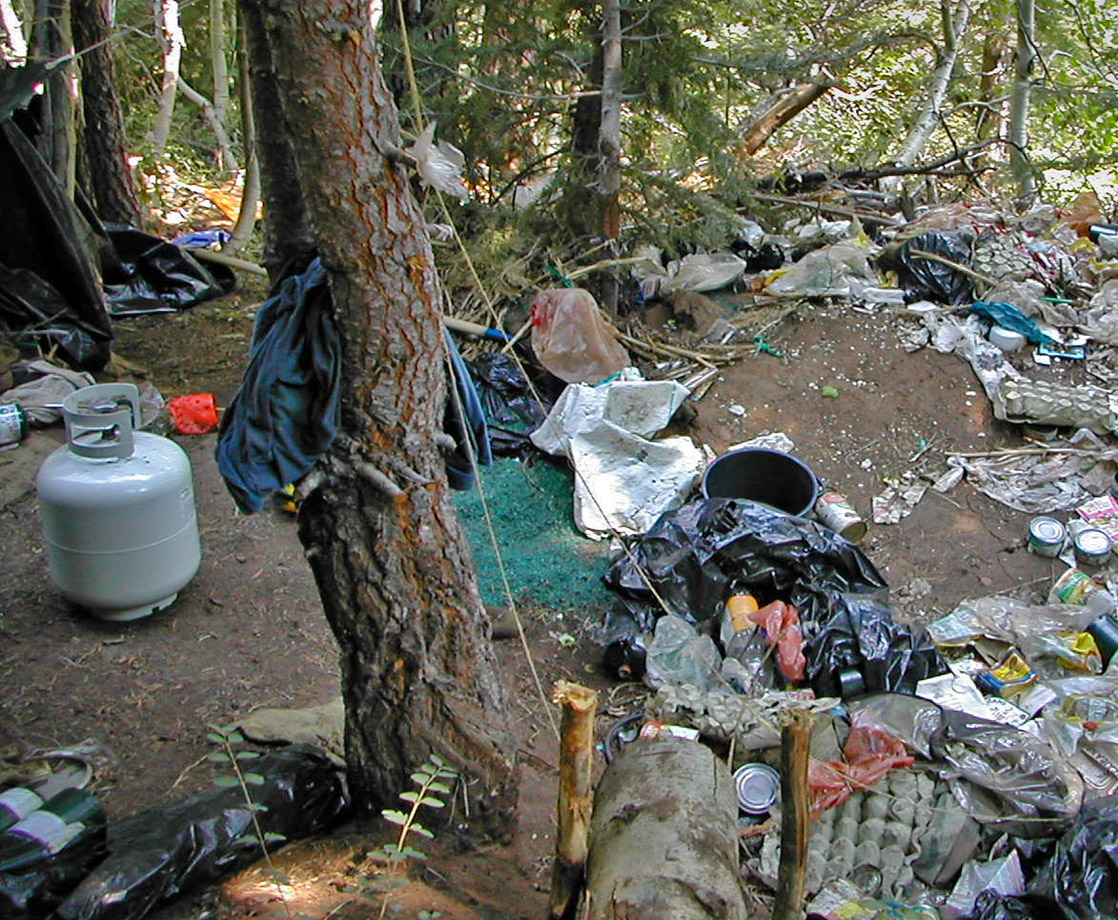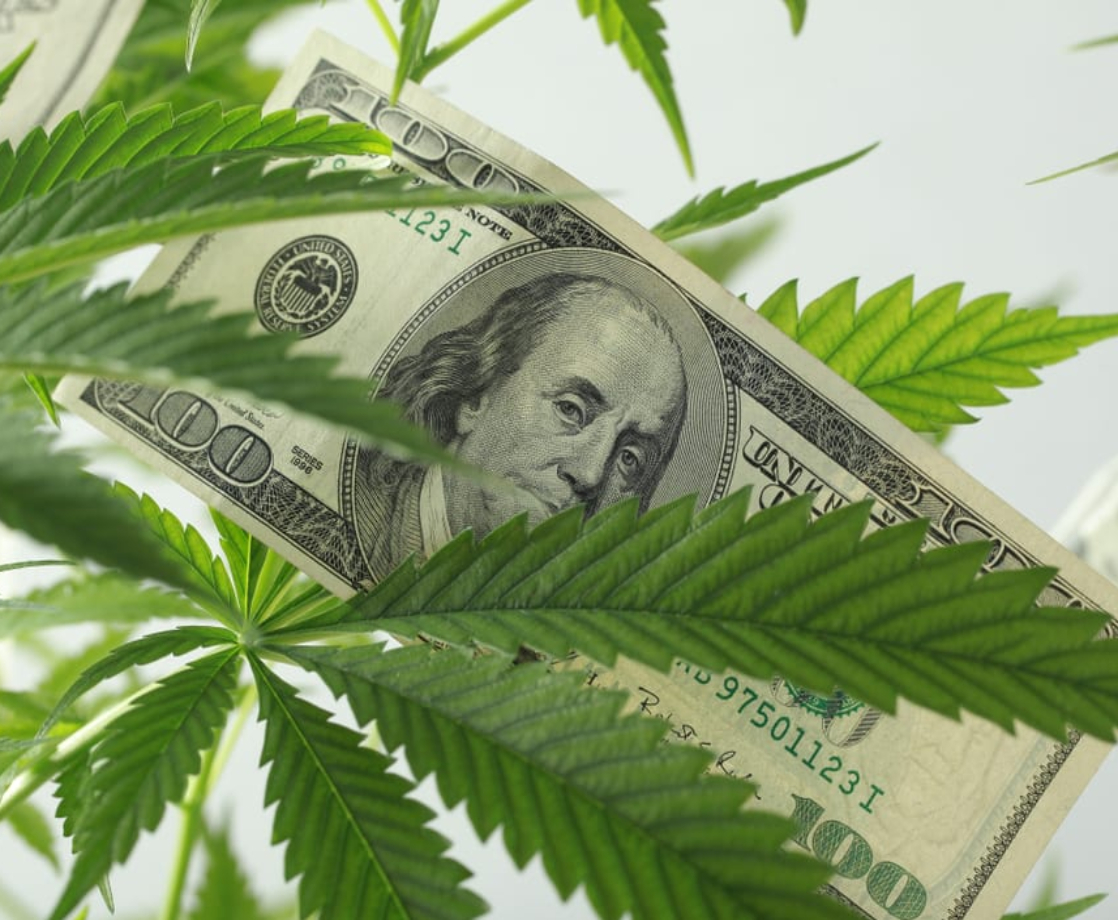Photo via
As America’s legal weed industry continues to grow, police, environmentalists, and wildlife officials are complaining of expanded black market grow operations hidden throughout the country’s dense public forests. With no regulation or oversight, the off-grid cultivation plots are pouring chemicals, trash, and other waste into the environment at previously-unseen rates, killing animals and eroding the land.
In California, in particular, forestry regulators say that there are more than 2,000 known contaminated grow sites waiting to be cleaned. In NorCal’s Shasta-Trinity National Forest, officials said they encountered one site with more than 3,000 pounds of trash, as well as spilled toxic chemical pesticides like carbofuran and the rodenticide Bromethalin.
The unscrupulous growers use those and other chemicals banned in US agricultural operations to make sure that critters and environmental uncertainties don’t disrupt the plant’s potential profit margins. But long after the crop has been harvested and sold, those chemicals — along with the piles of rubber, plastic, metal, and other trash — leech into animals’ diets, waterways, and soil tables.
“The true crime here is the fact that they’re killing off basically America’s public lands, killing off the wildlife, killing off our water,” Kevin Mayer, a US Forest Service law enforcement assistant special agent in charge, told National Public Radio. “This is stuff that, you know, it’s not gonna repair itself.”
And while California has a long and rich tradition of underground cannabis cultivation, law enforcement officials say that the grow sites popping up in deep backwoods are not operated by local farmers, but by well-funded international crime organizations.
Gallery — Moldy Marijuana and Signs of Bad Bud:
“We estimate that that 95% or more of the grows on public lands are controlled by foreign drug trafficking organizations,” says Rich McIntyre, who directs CROP, the Cannabis Removal on Public Lands Project. “These growers are trying to undercut the legal market by about 50 percent, and of course, a lot of the product that they’re growing is filled with these poisons,” McIntyre says, “and it’s likely finding its way into the market in various forms — flower, oils, and vape pens.”
McIntyre and his CROP cohorts are trying their hardest to bring attention to these ramifications of the black market bud trade, but with only six police officers patrolling more than 2.2 million acres of Shasta-Trinity forest, enforcing cannabis law and slowing the spread of contamination in National Parks is like picking needles out of a haystack.
“The Forest Service is grossly underfunded on a number of fronts — not just on a law enforcement front but on the scientific front as well,” McIntyre told NPR. “And that’s something that we hope to change.”
Follow Zach Harris on Twitter











